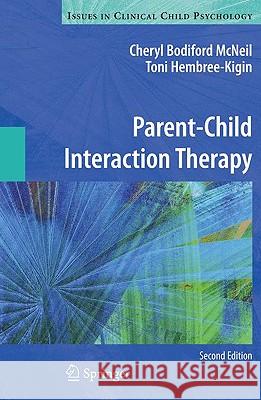Parent-Child Interaction Therapy » książka
Parent-Child Interaction Therapy
ISBN-13: 9780387886381 / Angielski / Twarda / 2010 / 484 str.
Parent-Child Interaction Therapy
ISBN-13: 9780387886381 / Angielski / Twarda / 2010 / 484 str.
(netto: 960,71 VAT: 5%)
Najniższa cena z 30 dni: 886,75
ok. 22 dni roboczych
Bez gwarancji dostawy przed świętami
Darmowa dostawa!
In 1995, we published a text called, Parent-Child Interaction Therapy: A Step-By-Step Guide for Clinicians, which provided a clinical description of PCIT for the treatment of two- to seven-year-old children with disruptive behavior problems. Since that time, PCIT has been disseminated widely across the United States and abroad. Numerous additional studies have been conducted regarding the efficacy of PCIT with a variety of populations. Subsequently, demand has been increasing for an expanded textbook that summarizes the research regarding clinical innovations in the program as well as applications to specialized populations.
PCIT: Expanded Clinical Edition retains much of the original information regarding the fundamentals of PCIT from the 1st edition, but the 2nd edition also presents applications of PCIT to special populations. In the first section, we discuss how to apply these treatment techniques to toddlers, older children, and siblings. The second section includes clinical adaptations of PCIT for special child populations: developmental disorders, child maltreatment (including reactive attachment disorder), mood and anxiety disorders, and ADHD.
In the third section, we include information on how to make PCIT effective when working with special parent populations (e.g., parents with developmental disabilities, depression, and anxiety). We also discuss how to facilitate successful coparenting in PCIT with divorced families. Other parent issues discussed include working with resistance, substance abuse, domestic violence, and multiple stressors. This section concludes with information regarding the use of PCIT with families from different cultural backgrounds. In the finalsection, we describe pilot projects integrating PCIT into community settings, such as the home, schools, community mental health centers, shelters, and group homes. Guidelines and opportunities for therapist training are presented. The appendix updates and supplements the handouts provided in the original text.











